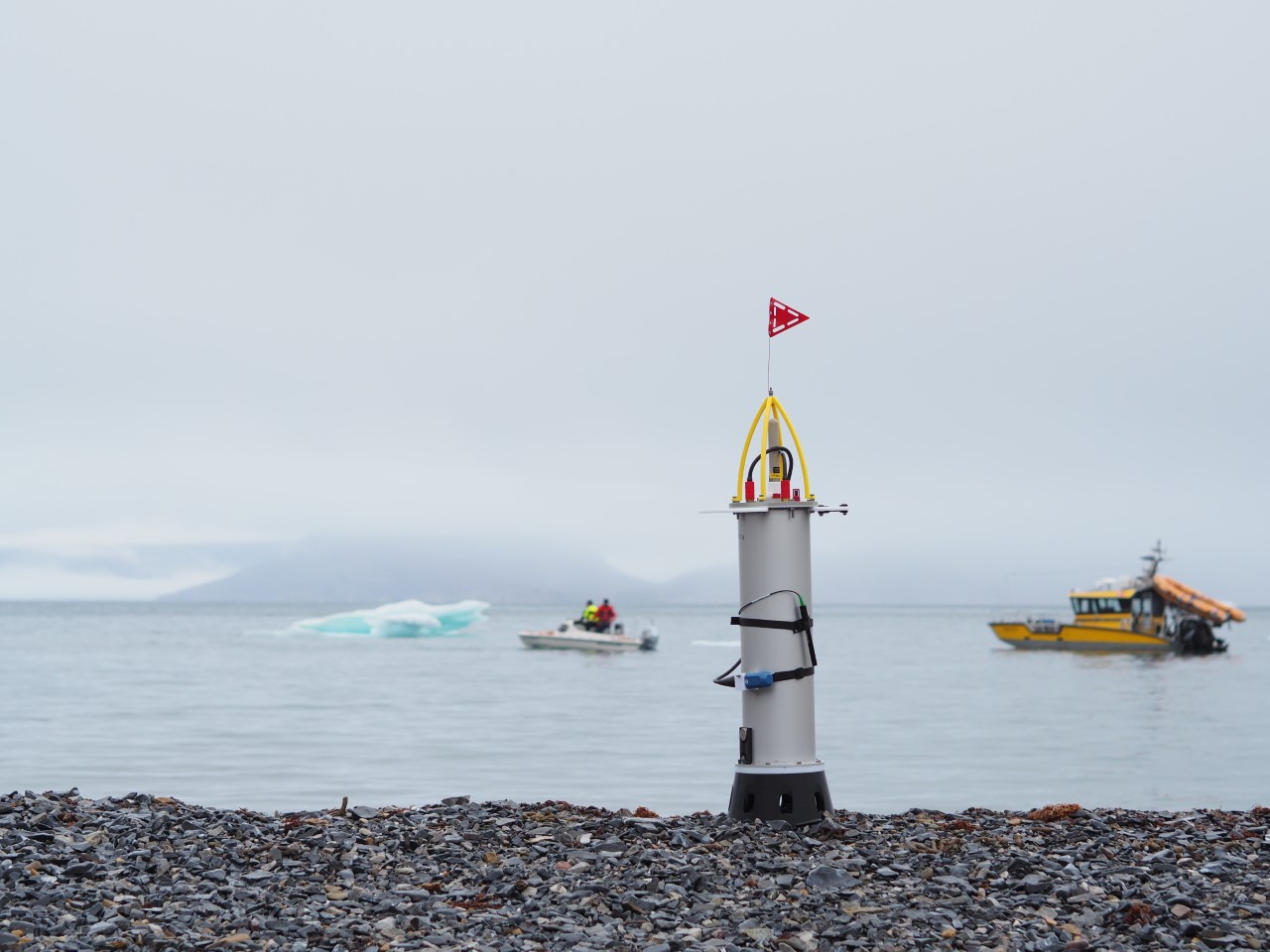Students nominated for major sustainability award
Three engineering students from Aarhus University have made it to the final of the SDG Tech Award 2020 with a robot that can measure salinity in the Arctic Ocean.


If we are to really understand the consequences of global warming, we need to look to the Arctic Ocean in the Northern Hemisphere.
Here, the rise in temperatures cause the Arctic ice sheet to melt, and the melt water flows through the fjords into the ocean. This alters the salt balance, which affects the ocean currents and ultimately the global climate as a whole.
"We know that temperatures are rising. We know that the ice is melting. But we don’t know much about what happens when freshwater mixes with seawater. This is a blind spot in research and a major problem," says Lucas Sandby, an engineering student at Aarhus University. Read more about the Bachelor of Engineering programmes at Aarhus University
Salt balance affects climate change
The three fellow students, Lucas Sandby, Jens Mejdal and Simon Bjerregaard, have developed a robot that can measure salinity, temperature, oxygen and depth in the cold sea, and thereby help researchers gain a much more detailed understanding of climate change.
"Researchers used to struggle with attaching their instruments to a line thrown out from a boat. The robot can collect far more data from the sea, and it can enrich our scientific knowledge with new, detailed information
about the volumes of melted ice sheet and how they move," says Jens Mejdal, an engineering student at Aarhus University.
The robot has been named Cost-efficient Arctic Ocean Profiler (COP), and one of the researchers who will use the robot to acquire new knowledge about the salt balance in the sea is Søren Rysgaard. He is a professor at the Arctic Research Centre at Aarhus University, and he just returned from an expedition to Northeast Greenland together with the three students and their robot.
"To be honest, I'm impressed. The expedition went well, and we can now start harvesting data that will potentially be ground-breaking for our climate change research. It requires a lot of effort to make a robot work optimally when it’s exposed to cold water and high pressure in combination with large salinity gradients. We’ve been struggling with this issue for many years, and we’ve been working with many different professional technology suppliers, but they’ve all given up on the task," he says.
Impressive place in the final
How is it then possible that a group of students can beat hundreds of nominees and make it to the final? And how can they build a robot at just a fraction of the budgeted costs previously on the table when climate researchers have discussed purchases of equipment?
Perhaps the answer is that excellent engineering is often founded on simple solutions, explains Claus Melvad, a Senior Professor of Engineering at Aarhus University School of Engineering, and the students’ supervisor.
For several years, he has been working on developing robots for climate research, and he points out that the salinity gradients in the Arctic Ocean cause complications for developing technology, because the electronic equipment is destroyed.
"Much of the equipment that exists today is extremely expensive, but it can't cope with the salinity gradients in the Arctic Ocean. The design of the students’ robot is based on a simple mechanical principle. It moves with the ocean currents and has a constant weight and a variable volume, which is affected by a linear piston mechanism. In this way, the robot’s density controls navigation up and down in the sea. It all takes place autonomously. The robot is simply told how deep it is to dive, and how many times to dive within 24 hours," he says.
Invention of major scientific importance
The robot has a weight of only 17 kilos, and because it is based on simple engineering principles, it is also very cost-efficient. It is designed and constructed to cope with the extreme pressure and low temperatures in the Arctic and to continuously measure salinity, temperatures and depth in the ocean, and transmit data to researchers via a satellite network. "Our collaboration with the engineering students has been hugely important. For years, we’ve been dreaming of improving measurements of the salt balance in the Arctic Ocean to gain a better understanding of the role of the sea in our climate system. We’ve been given access to a goldmine of data," says Søren Rysgaard.
Thanks to the robot, the three engineering students have been shortlisted as one of the five finalists in the Research and Visionaries category of the SDG Tech Award. The winners will be announced at an international awards show on 22 October. Read more about the SDG Tech Award
MORE INFORMATION
Why is the salt balance so important for climate research?
Salinity in the Arctic Ocean plays a key role in climate change, and it regulates an important global phenomenon when warm water from the Gulf Stream meets the cold water east of Greenland.
When temperatures rise, the seawater will not be cooled down as much as previously, and the increased ice melts will make the surface water less salty and therefore lighter. This messes up the delicate mechanism that runs the circulation of ocean currents all across the globe.
CONTACT
Claus Melvad, senior professor of engineering, Aarhus University School of Engineering Søren Rysgaard, professor, Arctic Research Centre, Aarhus University
